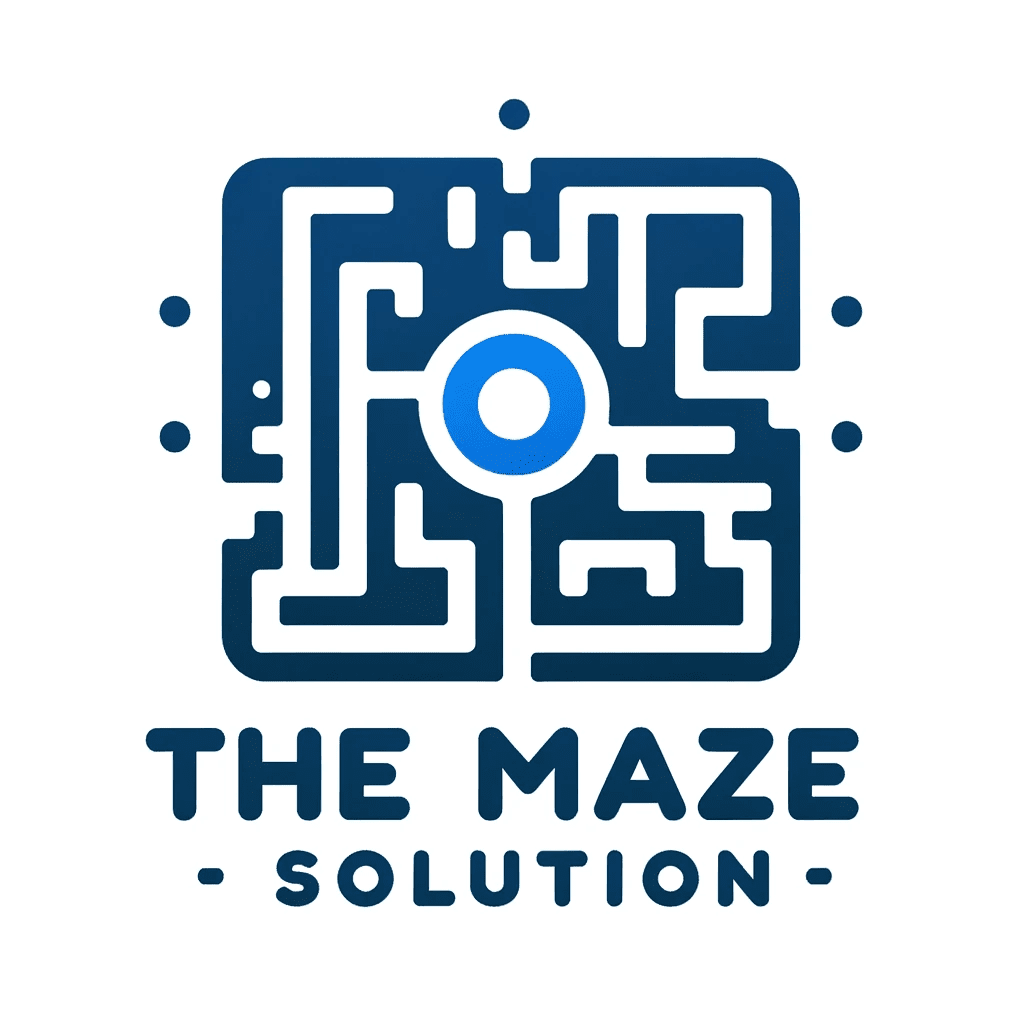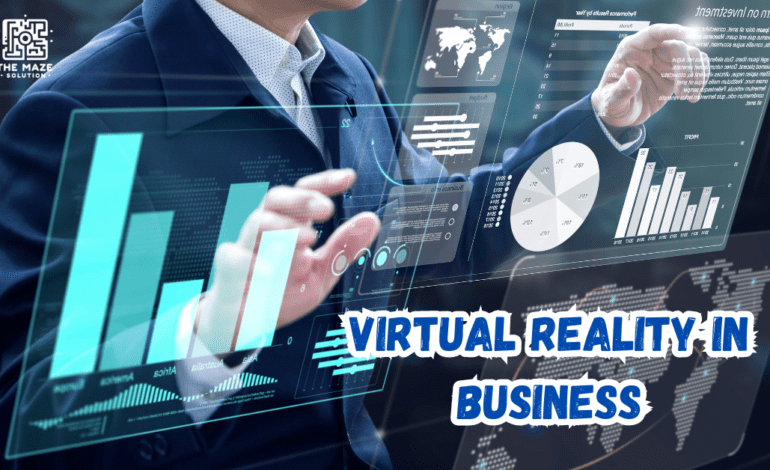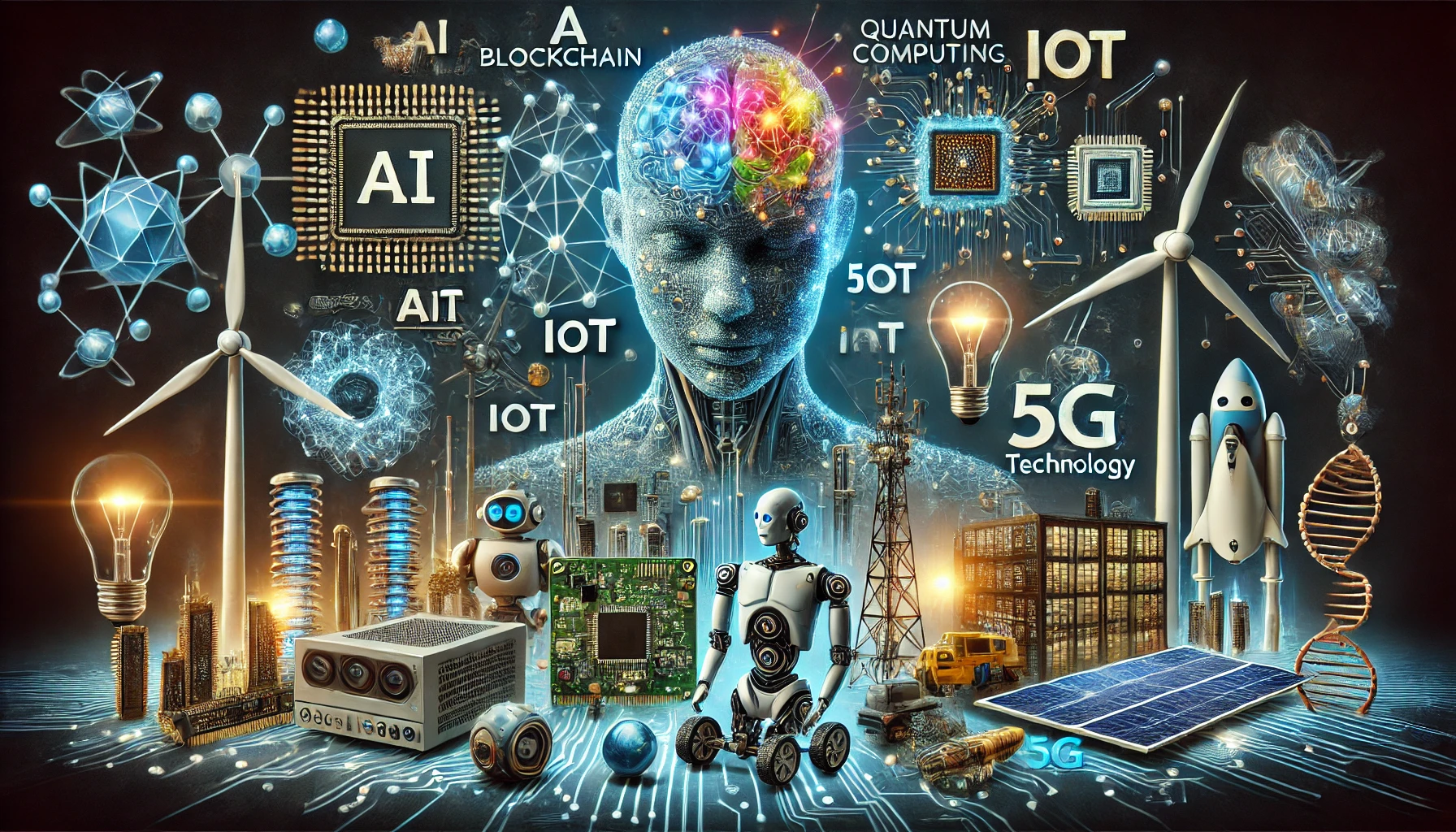Virtual Reality in Healthcare: Applications that are Changing the Industry
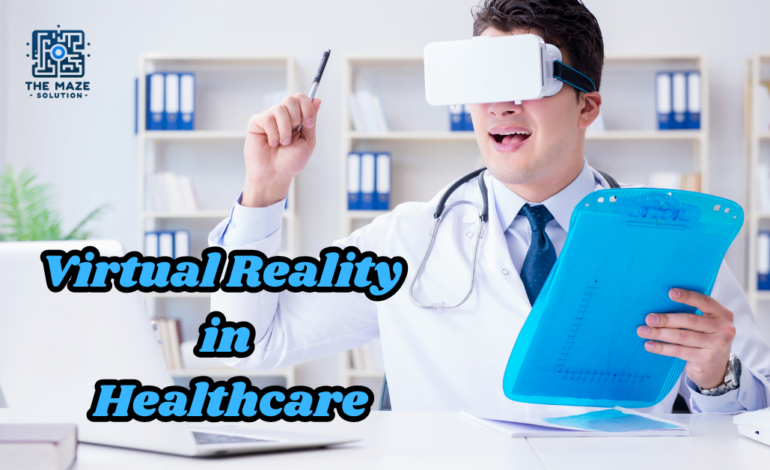
Introduction to Virtual Reality in Healthcare
Virtual Reality (VR) has been making waves across various industries, but its impact on healthcare is particularly groundbreaking. By immersing users in a digital environment, VR is transforming how healthcare professionals train, treat patients, and even plan surgeries. The growing interest and investment in VR technology signal a promising future for its applications in the healthcare sector. In this blog, we will explore the diverse applications of VR in healthcare, the benefits it offers, and its potential impact on the industry.
Understanding Virtual Reality in Healthcare
What is Virtual Reality in Healthcare?
Virtual Reality in healthcare refers to the use of immersive, computer-generated environments that simulate real-life scenarios for various medical applications. Unlike other technologies, VR allows users to interact with 3D environments in a way that feels remarkably real. From training aspiring surgeons to aiding in patient rehabilitation, VR is setting a new standard in medical practice.
The technology behind VR in healthcare has evolved significantly over the years. Initially limited to research labs, VR systems are now more advanced and accessible, thanks to improvements in hardware and software. Currently, VR technology leverages motion tracking, high-definition displays, and complex algorithms to create lifelike experiences.
What sets VR apart from other tech advancements in healthcare is its ability to create immersive simulations that can be tailored to specific medical needs. For example, unlike traditional video training, VR allows for interactive participation, giving practitioners a hands-on experience in a controlled environment.
Key Applications of VR in Healthcare
1. VR in Medical Training and Education
VR is revolutionizing medical training by providing healthcare professionals with realistic simulations of surgeries and medical procedures. This immersive technology enables students and professionals to practice complex skills without the risks associated with real-life situations. With VR, trainees can repeatedly practice procedures until they achieve proficiency, leading to better-prepared healthcare providers.
Through VR, medical education has become more engaging. Immersive learning environments allow students to explore human anatomy in 3D and understand intricate physiological processes. This interactive approach enhances knowledge retention and helps bridge the gap between theoretical learning and practical application.
2. VR in Pain Management
One of the remarkable applications of VR in healthcare is its role in managing chronic pain and anxiety. By providing patients with an immersive escape, VR distracts them from their pain, reducing the need for medication. Studies have shown that VR can effectively alleviate discomfort in patients undergoing painful procedures or suffering from chronic conditions.
In addition, VR-based pain relief therapies have demonstrated significant success. For instance, burn victims have reported lower pain levels when immersed in a calming virtual environment during wound care. This innovative approach not only helps manage pain but also enhances patient experience and satisfaction.
3. VR in Mental Health Treatment
Virtual Reality is proving to be a powerful tool in treating mental health conditions such as PTSD, anxiety disorders, and phobias. By recreating anxiety-inducing scenarios in a safe and controlled setting, VR allows patients to confront their fears and gradually desensitize their responses. This exposure therapy, combined with traditional methods, has shown promising results in improving mental well-being.
Several VR applications are specifically designed for mental health treatment. These programs offer guided experiences that help patients manage stress, practice mindfulness, and build emotional resilience. The ability to customize these experiences according to individual needs makes VR a valuable asset in mental health care.
4. VR in Physical Rehabilitation
VR is playing a significant role in physical rehabilitation by providing patients with interactive and personalized exercise programs. Through gamified experiences, patients are motivated to complete their therapy sessions, leading to faster recovery and improved outcomes. VR also allows therapists to track progress and adjust treatment plans based on real-time data.
Customized rehabilitation programs using VR have been particularly beneficial for stroke survivors and individuals with motor impairments. These programs simulate real-world activities, enabling patients to regain mobility and coordination in a virtual setting before transitioning to real-life scenarios.
5. VR in Surgical Planning and Simulation
Surgeons are leveraging VR technology to enhance pre-operative planning and simulate complex surgeries. By visualizing a patient’s anatomy in 3D, surgeons can better understand unique challenges and develop precise strategies. This preparation reduces the likelihood of complications and improves surgical outcomes.
VR applications enable surgeons to practice procedures multiple times before performing them on patients. This hands-on experience builds confidence and expertise, ultimately leading to safer and more successful surgeries.
Benefits of VR in Healthcare
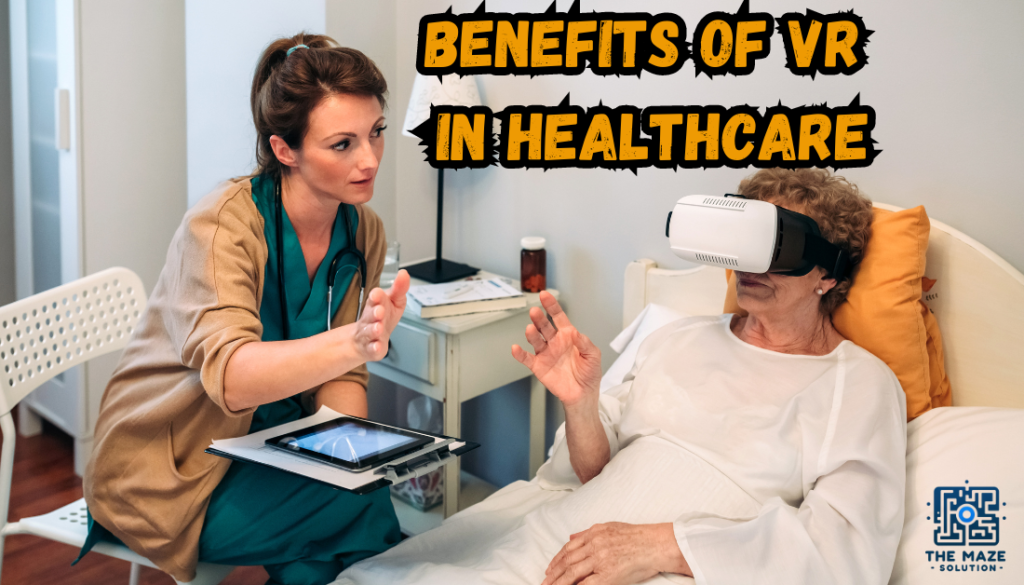
1. Enhanced Patient Experience
One of the primary benefits of VR in healthcare is its ability to provide patients with a more engaging and less stressful experience. By immersing patients in calming virtual environments, VR helps reduce anxiety and discomfort during medical procedures. This enhanced experience contributes to better patient outcomes and higher satisfaction levels.
The use of VR also fosters a sense of empowerment in patients. By being actively involved in their treatment, patients gain a deeper understanding of their conditions and the steps needed for recovery. This active participation can significantly influence their overall well-being and motivation to adhere to treatment plans.
2. Improved Training and Skill Development
For medical professionals, VR offers unparalleled training opportunities and skill enhancement. Traditional training methods often involve limited hands-on practice, but VR provides a risk-free environment where trainees can refine their skills. This realistic approach ensures that practitioners are well-prepared for real-life scenarios, ultimately elevating the standard of care.
The flexibility of VR training allows medical professionals to practice a wide range of procedures and scenarios. Whether it’s responding to emergencies or mastering complex surgeries, VR equips healthcare providers with the skills needed to handle diverse situations with confidence.
3. Cost-Effectiveness and Accessibility
One of the advantages of VR in healthcare is its potential to reduce costs associated with medical training, patient care, and rehabilitation. By minimizing the need for physical resources, VR offers a cost-effective solution without compromising quality. Additionally, remote access to VR programs makes specialized treatments more accessible to underserved communities.
The scalability of VR technology allows healthcare facilities to reach a broader audience without incurring significant expenses. This accessibility empowers more individuals to benefit from cutting-edge treatments and interventions, ultimately improving public health outcomes.
Impact of VR in Healthcare
1. Transforming Medical Practices
The integration of VR in healthcare is reshaping traditional medical practices, leading to more efficient diagnostics, treatment, and patient care. By providing real-time data and insights, VR enhances clinical decision-making and improves the accuracy of diagnoses. This transformation is paving the way for a more patient-centered approach to healthcare.
Examples of VR-driven changes in medical protocols include remote consultations and telemedicine services. Patients can now receive expert care from the comfort of their homes, reducing travel time and increasing accessibility to healthcare services.
2. Ethical and Regulatory Considerations
While the potential of VR in healthcare is immense, it also raises ethical and regulatory challenges. Issues such as data privacy, informed consent, and patient safety must be carefully addressed to ensure responsible implementation. Healthcare organizations must work closely with regulatory bodies to establish guidelines that protect patients’ rights and uphold ethical standards.
The integration of VR within existing legal frameworks requires collaboration between technologists, healthcare professionals, and policymakers. By establishing clear regulations, the industry can harness the benefits of VR while minimizing potential risks.
3. Future Prospects of VR in Healthcare
The future of VR in healthcare holds exciting possibilities. Ongoing research and technological advancements continue to push the boundaries of what VR can achieve. From personalized medicine to remote surgeries, the potential for VR to revolutionize healthcare is limitless.
Emerging trends indicate that VR will play a pivotal role in chronic disease management, preventive care, and patient education. As VR technology becomes more sophisticated, its applications will expand, creating new opportunities for innovation and collaboration within the healthcare industry.
Case Studies and Real-World Examples
1. Successful Implementation of VR in Healthcare
Numerous case studies showcase the successful implementation of VR in healthcare, highlighting its positive impact on patient outcomes. For instance, a hospital in California used VR to reduce anxiety in pediatric patients undergoing MRI scans. By immersing children in a virtual playground, the hospital reduced the need for sedation and improved the overall experience.
In another example, a rehabilitation center in the UK introduced VR-based programs for stroke survivors. Patients engaged in virtual exercises that mimicked real-life activities, leading to significant improvements in motor skills and confidence.
2. Lessons Learned from VR in Healthcare Projects
The implementation of VR in healthcare projects offers valuable lessons for future endeavors. One key takeaway is the importance of collaboration between healthcare providers and technology developers. By working together, they can create tailored solutions that address specific medical needs.
Additionally, continuous evaluation and feedback from users are crucial for refining VR applications. Regular assessments ensure that the technology remains relevant, effective, and user-friendly, ultimately enhancing its impact on patient care.
Summarizing the Role of Virtual Reality in Healthcare
In conclusion, Virtual Reality is transforming the healthcare landscape by offering innovative solutions for training, treatment, and patient engagement. Its applications are diverse, ranging from medical education to mental health therapy. By enhancing patient experiences and improving clinical outcomes, VR is set to revolutionize the industry.
Healthcare professionals, tech enthusiasts, and investors have a unique opportunity to explore and integrate VR into their practices. By staying informed about ongoing developments, they can leverage this technology to drive positive change and shape the future of healthcare.
For those interested in exploring Virtual Reality in healthcare further, consider partnering with technology experts or attending industry conferences. These valuable resources can provide insights and guidance on how to successfully implement VR in healthcare settings.
FAQs
How has virtual reality changed the industry?
Virtual and Augmented Reality is making a change within the industry in profoundly deeper ways: from entertainment and education to healthcare and manufacturing.
How VR technology will transform healthcare?
VR offers immersive simulations for medical students and professionals, allowing them to practice surgical procedures, diagnose conditions, and understand complex anatomical structures without the risk associated with real-life practice.
How is VR used in different industries?
VR can transform medical training and education by providing immersive simulations of complex surgical procedures, allowing medical professionals to practice without endangering real patients.
